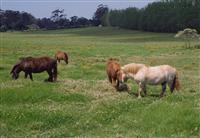Introductory Course to the Care of Horses
Find out more with this distance learning course on horse care.
 Learn to manage the daily requirements of a horse at grass. The course aims to develop:
Learn to manage the daily requirements of a horse at grass. The course aims to develop:
- The ability to handle horses using a range of different procedures.
- Skills to evaluate a horses conformation.
- An understanding of diet.
- Knowledge of grooming procedures.
- An ability to develop appropriate management procedures.
- Knowledge of commercial opportunities, including trading horses.
Comment from Student " My time with ACS has been extremely
beneficial... and I would recommend the school to anyone seeking to
study by Distance Education" - Victor, studying Adv. Certificate in Applied Management (Horses).